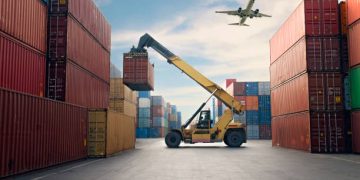Asian exports, including those from the Philippines, are expected to remain resilient in the second half of 2025, countering earlier concerns that shipments would decline as front-loading ahead of United States (US) tariffs tapered off, according to a recent analysis by Capital Economics.
Export growth across Asia expanded by about 7.5 percent in US dollar terms in the first six months of 2025 compared with a year earlier. Some observers had attributed the strong performance to exporters accelerating shipments before tariffs were applied, raising fears of a sharp slowdown.
However, Capital Economics deputy chief emerging markets economist Jason Tuvey noted that other dynamics are driving export growth. “Tariff front-running isn’t the only possible explanation for why exports have been doing so well. One is that US demand for artificial intelligence (AI)-linked electronics has been strong,” he explained in a report released August 19.
Tuvey added that supply chain reordering has also played a role. “Another factor driving rapid growth in exports to the US from parts of the region is that there is some re-ordering of supply chains taking place. This has been to the benefit of Southeast Asia and India and to the detriment of China,” he said.
Data shows that China’s shrinking share of US imports over the past year has coincided with an increase in imports from other parts of Asia. While some of this may be explained by rerouting shipments through third countries, Tuvey suggested this only accounts for a small portion of the shift.
He emphasized that overlapping export capacity and underutilized resources in Asia mean many economies are positioned to benefit from changes in US trade patterns. “The upshot to all of this is we don’t agree with the hypothesis that Asia’s exports to the US will fall sharply as tariff front-running ends,” Tuvey said.
Looking ahead, Capital Economics expects Asian export growth to moderate through late 2025 and into 2026–2027 as early-year momentum eases. Still, Tuvey noted that any slowdown is unlikely to weigh heavily on GDP growth for most economies in the region.
In the Philippines, merchandise exports rose 13.2 percent year-on-year in the first half of 2025, reaching a record $41.24 billion. June alone saw a 26.1 percent year-on-year increase, with shipments totaling $7.02 billion.
The US remained the Philippines’ top export market, accounting for $6.6 billion, or about 16 to 17 percent of total shipments during the January to June period. June exports to the US surged 35.2 percent year-on-year to $1.21 billion.
This performance came despite earlier projections from the Cabinet-level Development Budget Coordinating Committee (DBCC), which had forecast a two-percent decline in goods exports for 2025 due to weaker global demand and trade policy uncertainty. Prior to tariff adjustments announced earlier this year, the government had anticipated six-percent growth in merchandise exports.
#SupplyChainNews #TradeUpdate #AsianExports #TariffsAndDuties #PhilippinesTrade

















